Water column sampling delivers more specific data
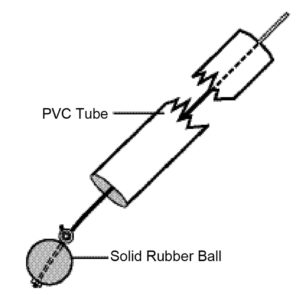
In pond aquaculture, water quality variables such as temperature, specific conductance, salinity, turbidity, pH, and dissolved oxygen typically are measured in situ with sensing probes. These probes are attached to cables that allow measurements to be made at different depths. Other water quality variables must be measured in samples of water by traditional laboratory methods or with water analysis kits.
Surface samples
The most common way of collecting water samples is to obtain surface water in a bottle. This is a crude method, however. The sample can only be taken from near the surface and close to shore. The person doing the sampling usually must remain in an uncomfortable position until the bottle fills.
The water near the pond edge often is stagnant, and may contain debris. Since wave action typically causes floating debris to drift to the leeward side of ponds, samples usually should be dipped on the windward side. Even when there is no floating debris, the action of submerging the bottle in shallow water often disturbs the bottom, and water entering the bottle can be contaminated with resuspended sediment.
Boats can aid in obtaining clean surface samples away from the water’s edge. The main problem with sampling from a boat is the difficulty in moving the boat from one pond or other sampling site to another.
Long-handled dippers facilitate the collection of water samples from pond or canal banks. The handle allows one to stand in a comfortable position and extend the dipper far enough away from the edge to secure a reliable sample. The sample can be transferred to a plastic bottle for transport to the laboratory. Those not willing to invest in a factory-made dipper can make one by taping a wide-mouthed bottle to a long handle.
Water column sampling
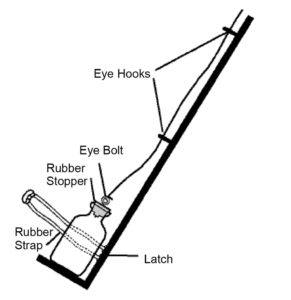
Concentrations of water quality variables can vary with depth. Water column sampling provides a better representation of average pond water quality than can be obtained with surface water samples. An excellent water column sampler can be made from a length of 5-cm-diameter plastic pipe, a piece of nylon cord, and a rubber ball or tennis ball, as illustrated in Fig. 1.
The cord is adjusted so that the ball dangles 5 to 10 cm below the lower end of the pipe. The pipe is then inserted vertically into the water to the desired depth and held steady so the ball can be pulled into the tube with the cord. After holding the cord tight to seal the end of the pipe while removing it from the water, hold the pipe over a plastic bucket and release the cord to allow the water to flow out.
While column samples must be taken in deeper water, wading usually is unsatisfactory, for it disturbs sediments around the person doing the sampling. Some ponds have piers from which column samples may be collected, but a boat usually is required for securing column samples.
Water samples may be needed from specific depths to evaluate changes in water quality related to depth. In shallow water bodies, samples can be obtained to depths up to 2 m with the device illustrated in Fig. 2. The stopper is placed in the bottle and the handle is used to submerge the bottle to the desired depth. The stopper is then pulled out by tugging the cord to allow the bottle to fill with water.
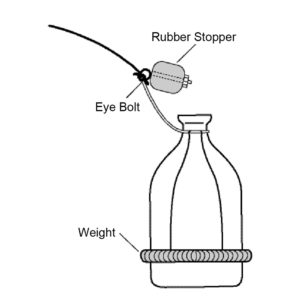
Cage culture is sometimes conducted in deep lakes where water samples from depths of 20 m or more may be needed. Kemmer or van Dorn bottle water samplers or small battery-powered pumps attached to hoses may be purchased from scientific supply houses and used to secure such samples. An alternative to expensive, manufactured samplers is illustrated in Fig. 3. The stopper is inserted tightly and the weighted bottle is lowered to the necessary depth. The stopper is then removed by a sharp tug of the rope and the bottle is retrieved with the rope.
Sampling time
The timing for sampling water is critical for some variables. Water temperature, dissolved oxygen, and pH are lowest in the early morning and highest in the afternoon. Carbon dioxide concentrations follow the opposite trend. Although total ammonia nitrogen concentration does not exhibit a daily trend, non-ionized ammonia concentration does. The percentage of total ammonia in the unionized form is highest in the afternoon because of the greater water temperature and pH. Most other variables do not exhibit well-defined daily variation.
Pond bottom sampling
Soil samples can easily be collected from the bottoms of aquaculture ponds after the ponds are drained for harvest. The most common variables measured in soil samples are pH and organic carbon. A 5-cm-deep sample is satisfactory, but samples should be taken in 10 to 15 places in a pond and combined to give a single composite sample for analysis. The same amount of soil should be taken from each place for making the composite.
This can be assured by a mark 5 cm from the end of a 60- to 80-cm length of thin-walled plastic pipe. The pipe is forced into the soil to the mark, removed, and the soil core removed. A round wooden stick slightly smaller than the bore of the sample tube can be inserted into the tube to push the sample out into a bucket. After placing all samples from a pond in the bucket, the samples should be thoroughly mixed together to form a composite. Only a portion of the composite is then needed for analysis.
Soil samplers
Soil samplers such as weighted core tubes, Ekman dredges, and Peterson dredges for collecting samples from the bottoms of full ponds or lakes can be purchased from scientific supply houses. A simple device made from a can and wooden stick can be used to collect samples from shallow ponds. A wading worker can sample bottom soils to a depth of 1.5 m, and a diver can take samples from greater depths.
(Editor’s Note: This article was originally published in the January/February 2007 print edition of the Global Aquaculture Advocate.)
Now that you've reached the end of the article ...
… please consider supporting GSA’s mission to advance responsible seafood practices through education, advocacy and third-party assurances. The Advocate aims to document the evolution of responsible seafood practices and share the expansive knowledge of our vast network of contributors.
By becoming a Global Seafood Alliance member, you’re ensuring that all of the pre-competitive work we do through member benefits, resources and events can continue. Individual membership costs just $50 a year.
Not a GSA member? Join us.
Author
-

Claude E. Boyd, Ph.D.
Department of Fisheries and Allied Aquacultures
Auburn University
Alabama 36849 USA
Tagged With
Related Posts

Health & Welfare
A comprehensive look at the Proficiency Test for farmed shrimp
The University of Arizona Aquaculture Pathology Laboratory has carried out the Proficiency Test (PT) since 2005, with 300-plus diagnostic laboratories participating while improving their capabilities in the diagnosis of several shrimp pathogens.
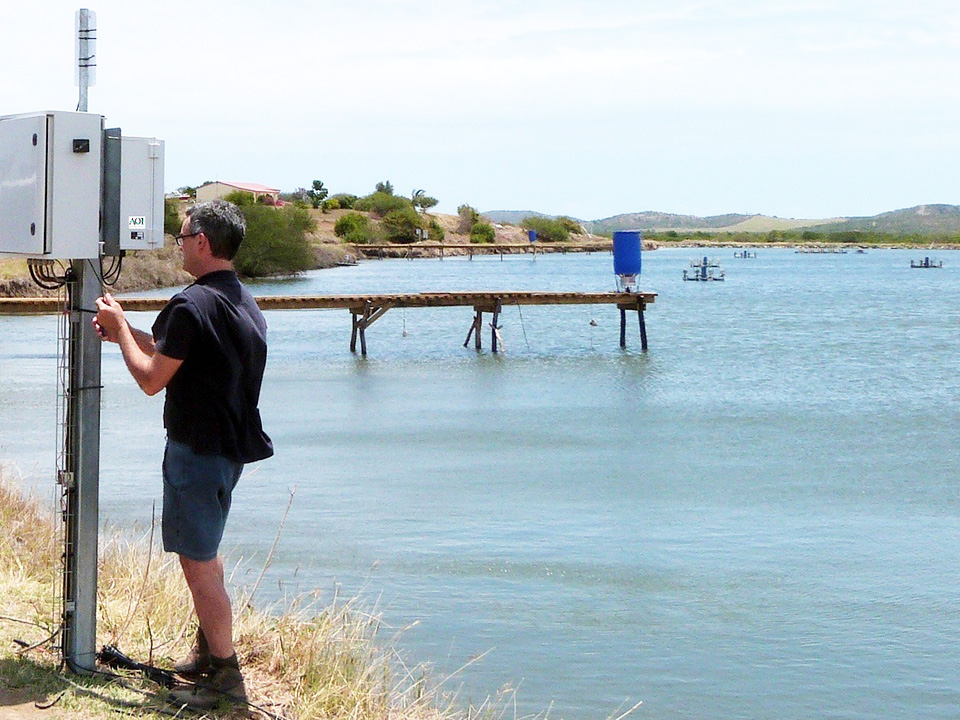
Innovation & Investment
Acoustic control improves feeding productivity at shrimp farms
In systems recently developed for shrimp farms, passive acoustic-based technology enables sensor-based control of multiple automatic feeders. Improved growth and feed conversion have been recorded at commercial farms using the technology.
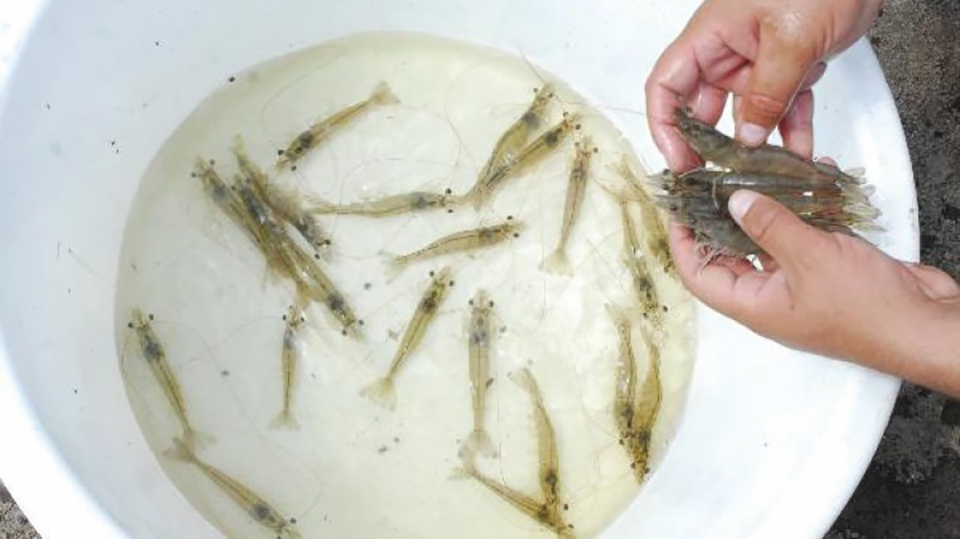
Health & Welfare
A study of Zoea-2 Syndrome in hatcheries in India, part 1
Indian shrimp hatcheries have experienced larval mortality in the zoea-2 stage, with molt deterioration and resulting in heavy mortality. Authors investigated the problem holistically.
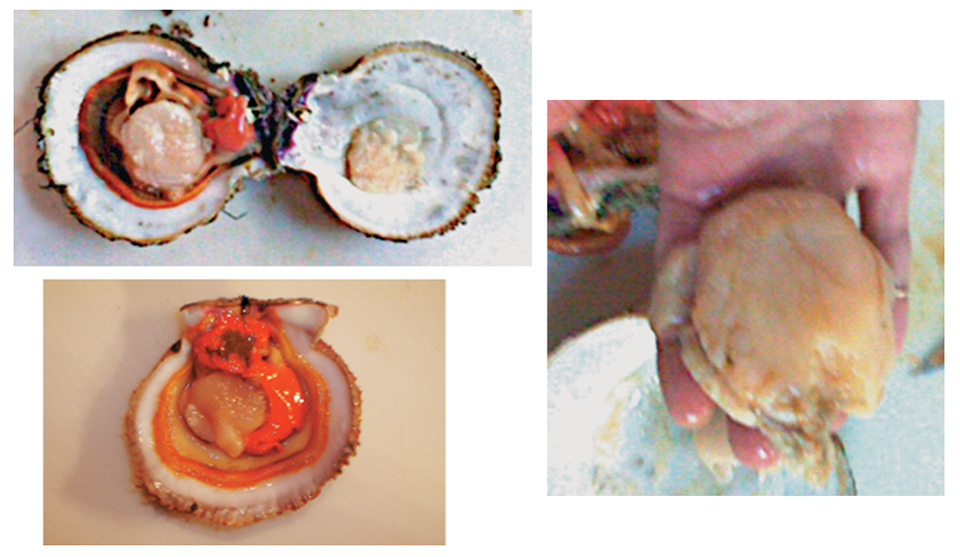
Health & Welfare
Alaska’s purple-hinge rock scallops considered for aquaculture development
Purple-hinge rock scallops are highly prized by local communities and harvested for subsistence in coastal Alaska. To evaluate the suitability of purple-hinge rock scallops for mariculture in Alaska, the authors conducted a four-year grow-out study.

